What types of composite core conductors are commercially viable today?
Author: Joseph Sylvia – June 17th, 2024

With all of the recent discussion around “HTLS conductor” & “advanced reconductoring”, it is more important than ever to understand/properly define the different types of overhead conductor technologies in existence today.
Steel core conductor has been the go-to solution for electric utilities for many years now. ACSR was invented over 100 years ago & ACSS over 50, and while they still have a place within utility networks, composite core or “advanced” conductors will forever change the way utilities approach the need for a more capable and dependable grid.
There is a reason the most demanding applications have relied on carbon fiber composites (aerospace, military, and medical to name a few). These materials have an intrinsically low coefficient of thermal expansion (roughly 10x lower than conventional steel) and impressive specific properties in tension (twice as strong as steel for 1/4 of the density). These attributes make composites ideally suited to perform as the strength member for overhead conductor within transmission and distribution networks.
The thermal properties/strength-to-weight ratio of composite conductor core allows for twice the current carrying capacity of conventional steel core conductors and an added ~28% more aluminum content, the conductive substance, without a weight or overall diameter penalty. They are also installed using industry standard guidelines (IEEE-524) & equipment.
Below is an overview of the four technologies that exist today.
Carbon/Glass Fiber Hybrid
(Produced by Epsilon Cable)

Suited to most field conditions and usually providing the best cost/ampacity ratio, this type of composite core is the most deployed worldwide today, and can be considered the baseline of composite core conductor options.
It is also the only technology that has had a clear scope of qualification for over 10 years through ASTM B987.
While it is often seen as a single product type, these glass/carbon hybrids are rather part of a versatile range of solutions: switching matrix material or fiber types can yield multiple core options (identical looking, but with different intrinsic properties) including different performance levels with different ampacity/mechanical capabilities.
All Carbon Fiber with Aluminum Encapsulation
(Produced by Epsilon Cable)

This design has been successfully deployed over the past ~10 years in multiple countries, from multiple suppliers across the globe as well.
The main mechanical difference is that their elastic modulus is higher than hybrid composites, due to added carbon fiber content, inevitably bringing a slightly higher upfront cost.
Another downside is the necessity to lower their thermal rating because of epoxy resin off-gassing above 320°F (160°C) ultimately damaging the aluminum encapsulation and thus the galvanic corrosion protection.
It is also important to note that off-gassing has been observed at lower temperatures with lower quality products within the market as well.
These products have their place within the market as a complementary product to hybrid design for certain scenarios. They usually are the most effective option in cold climates where extra modulus is required to mitigate sag caused by radial ice loads, and thus thermal constraints are not as much of a consideration.
Multi-Strand Composite Core
(Not produced by Epsilon Cable)

Encompassing several carbon strands coated with a thin galvanic protection layer, the benefit for customers is the resemblance to existing stranded metallic core conductors, the possibility of load-path redundancy (multiple cores), and slightly higher bendability.
Several downsides also exist however:
– A “black metal design” (what composite experts call a copy-paste transition from metals to composite without structural optimization)
– Lower axial performance (higher bendability because carbon fibers are off-axis results in lower axial tensile strength)
– Not manufactured using the pultrusion process (lower fiber content than pultruded rods)
– Risk of damage caused by increased stress or abrasion at the interface of the strands due to small points of contact between the strands
Metal Matrix Composite
(Not produced by Epsilon Cable)

This technology exists within a different category (moving from CIGRE HTLS Type 4 = polymer matrix composite, to Type 3 = metal matrix composite).
It is a metal composite made of aluminum fibers and aluminum matrix. The main advantage is a slightly higher thermal rating than previously presented technologies.
However, the main drawback is the fact that the composite is extremely fragile and numerous incidents have been reported of the conductor breaking during and after installation. Cost is also often cited as a strong constraint (~2x the cost of the polymer matrix equivalent).
Regarding implementation, this type of core would be slightly above others in terms of operating capability but challenges associated with CAPEX and installation continue to hinder its deployment.
If you have any questions regarding advanced reconductoring or advanced conductor solutions, feel free to reach out to the Epsilon engineering team. Thank you.

About the author, Joseph Sylvia
Joseph is Epsilon Cable’s Director of Business Development in the US. He is passionate about delivering innovative solutions that improve the efficiency and sustainability of the power industry.
He has been working for the past seven years on educating utility professionals and decision makers about the many benefits of installing High-Capacity, Low-Sag Advanced Composite Core Conductors
